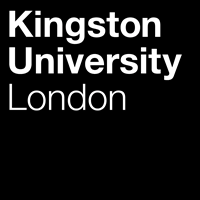About the Project
The group has published on the discovery of heterocyclic quinone anti-cancer agents with specificity towards hypoxic cells associated with solid tumours,[1] reductase enzymes over-expressed in cancer,[2] and mutations in the FANC DNA repair genes (Figure 1).[3,4] We have developed safer nitric oxide (NO) donating vasodilators, that release NO up to 7 times faster than the commercial drug.[5] Our passion is the synthesis of new heterocycles, which account for more than 80% of all pharmaceuticals, in particular quinones reductively activated in solid tumour cells.[6-8] Recently, we developed heterocyclic quinone prodrugs activated by visible light, which offer potential new photodynamic therapy treatments.[9,10]
Inherited mutations in certain genes, notably BRCA1, BRCA2 and FANC significantly increase susceptibility to breast, ovarian, prostate, and other cancers. The overall frequency of BRCA germline mutations is significant in the Arab population.[11] The term “BRCAness” however applies more widely, as it includes non-inherited cancer cases for describing alterations in these genes and related proteins.[12] The BRCA and FANC pathways play a key role in DNA damage repair and are therefore important in the response of cancer cells to chemotherapeutic (cytotoxic) agents. This research involves identifying molecular functionalities responsible for the BRCA/FANC pharmacogenomic response pathway and using such information to match patients with molecularly targeted therapies, so leading to the development of precision medicines. Structure-activity relationships from reported anti-cancer scaffolds (Figure 1) allow us to devise new synthetic targets. The project involves working in a multi-disciplinary team of chemists, cancer research scientists and clinicians in the UK and Qatar.
References
[1] M. Lynch, F. Aldabbagh et al., Chem. Eur. J. 2007, 13, 3218 DOI.
[2] M. Sweeney, F. Aldabbagh, et al., Bioorg. Med. Chem. 2016, 24, 3565 DOI.
[3] L. O’Donovan, F. Aldabbagh, et al., Chem. Commun. 2008, 43, 5592 DOI.
[4] K. Fahey, F. Aldabbagh, et al., Eur. J. Med. Chem. 2010, 45, 1873 DOI.
[5] P. Kielty, F. Aldabbagh, et al., Org. Lett. 2018, 20, 3025 DOI.
[6] M. Sweeney, F. Aldabbagh, et al., Org. Lett. 2018, 20, 6970 DOI.
[7] D. Conboy, F. Aldabbagh, et al., Org. Biomol. Chem. 2021, 19, 2716 DOI.
[8] D. Conboy, F. Aldabbagh, et al., J. Org. Chem. 2019, 84, 9811 DOI.
[9] P. Kielty, F. Aldabbagh, et al., Chem. Commun. 2019, 55, 14665 DOI.
[10] P. Kielty, F. Aldabbagh, et al., Eur. J. Org. Chem. 2021, 6652 DOI.
[11] A. J. Alhuqail et al., Breast Cancer Res. Treat. 2018, 168, 695 DOI.
[12] C. J. Lord, A. Ashworth, Nat. Rev. Cancer 2016, 16, 110 DOI.
[13] N. A. Salman, G. H. Ashrafi, et al., Sci. Rep. 2017, 7, Article 43591 DOI.
[14] M. A. Ismail, M. Samara, N. I. Al-Dewik, et al., Sci. Rep. 2021, 11, 8833 DOI.
[15] M. A. Ismail, M. Samara, N. I. Al-Dewik, et al., Mol. Genet. Genom. Med. 2020, 8, e1319.

 Continue with Facebook
Continue with Facebook



